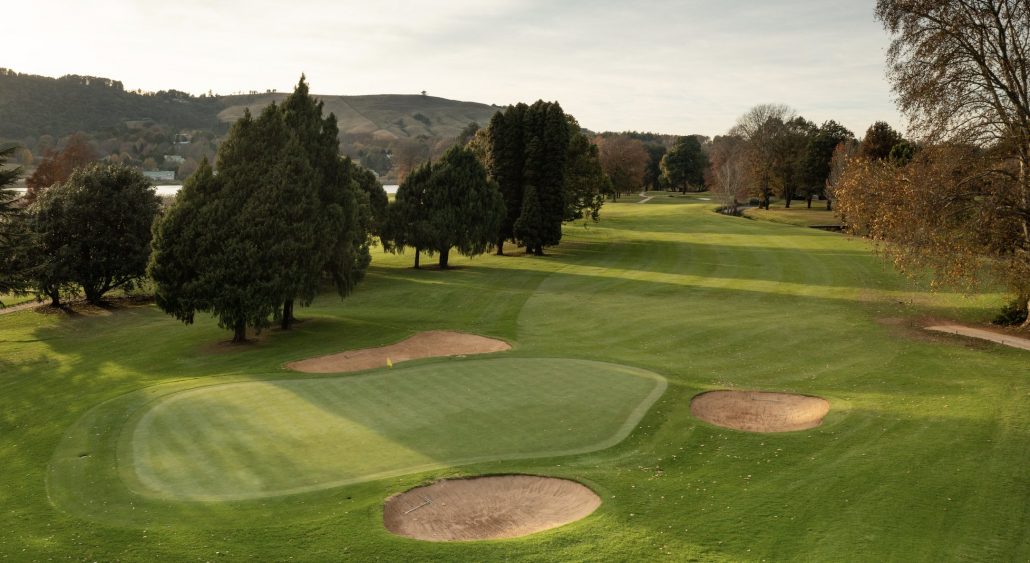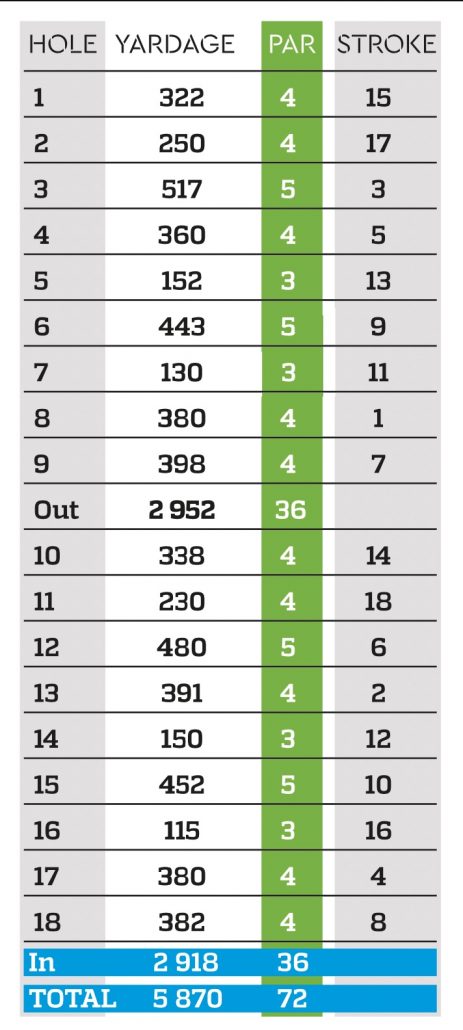South Africa has several nine-hole courses on offer, yet few come with the pedigree and history of Bosch Hoek in the KwaZulu-Natal Midlands, writes MARK SAMPSON.
Originally a working farm, the Bosch Hoek land dates to the 1850s and the arrival of the settlers in the Midlands area. The original owners, Jan Abraham Naude and Lucas Janssen van Vuuren, acquired 5 863 acres of land. It was a large farm by any standards and as farming in the area became more popular, parts of it were sold off to leave what is now Bosch Hoek farm.
Over the years, owners changed and in the 1960s, well-known businessman Charles Barlow bought the farm. He was part of a group that decided they wanted their own private course in the upmarket suburb of Bryanston, Johannesburg. They decided to commission famous golf course designer Bob Grimsdell to design the private course.
Part of the deal was that Grimsdell would also design a nine-hole layout at Bosch Hoek for Barlow’s private use. Hailing from England, Grimsdell had relocated to South Africa to immerse himself in the industry as a greenkeeper. Over time and under the mentorship of two other renowned golf course architects, Harry Colt and CH Alison, he soon followed in their footsteps to produce numerous masterpiece designs.
The layout was completed in 1963 and was kept private by the Barlows for 30 years. After Barlow died in 1979, his stepson Peter Gallo acquired the farm and continued to maintain the golf course as a private facility. In 1990, Gallo formed the Bosch Hoek Golf Club & Country Estate and sometime later, sold the development to the homeowners of the estate – who in turn sold the golf course to South African entrepreneur Ivan Clark. Clark still lives on the property and plays a key role in the daily running of the course and surrounds as the current president of the club.
The layout can best be described as ‘elegantly simple’. Simple in the sense of a no-frills layout that was contoured primarily by the lay of the land with very subtle bunkering and relatively small greens that are not over-contoured.
In every aspect it is a player-friendly layout. Added to this, it is surrounded by a variety of mature trees and Midlands grassland, making it a visual delight. If you have the opportunity to visit in April or May, the course is transformed into a spectacular tapestry of autumn magenta and orange shades from the many mature deciduous oaks, pin oaks, liquid ambers and plane trees.
The nine-green, 18-tee layout can be stretched to 5 870m off the men’s tees and comes with several short par fours in the 230–240m range. That said, the clever Grimsdell design is no pushover and comes with numerous tests including the need to shape your shots as well as avoid numerous water hazards with 14 of the 18 holes having water. It has undergone several changes over the years, the most relevant being the resurfacing of the greens with bent grass in 2013. After completing your first nine, you can expect as much as a 40m change in the length of some holes due to varying tee positions.
The course starts with two short par fours of 322m and 250m respectively before tackling the longest hole on the course of 517m. The fairway winds its way through a tight channel of trees which need to be negotiated. Greenside one can expect a small well-protected target sliding steeply from back to front. The Ndiza River runs across the entire front side of the green as it makes its way down through the entire course. A small bunker directly over the back of the green is the final bit of protection making for a difficult target. The suggested play would be to lay up for two allowing for a short-iron into the green.
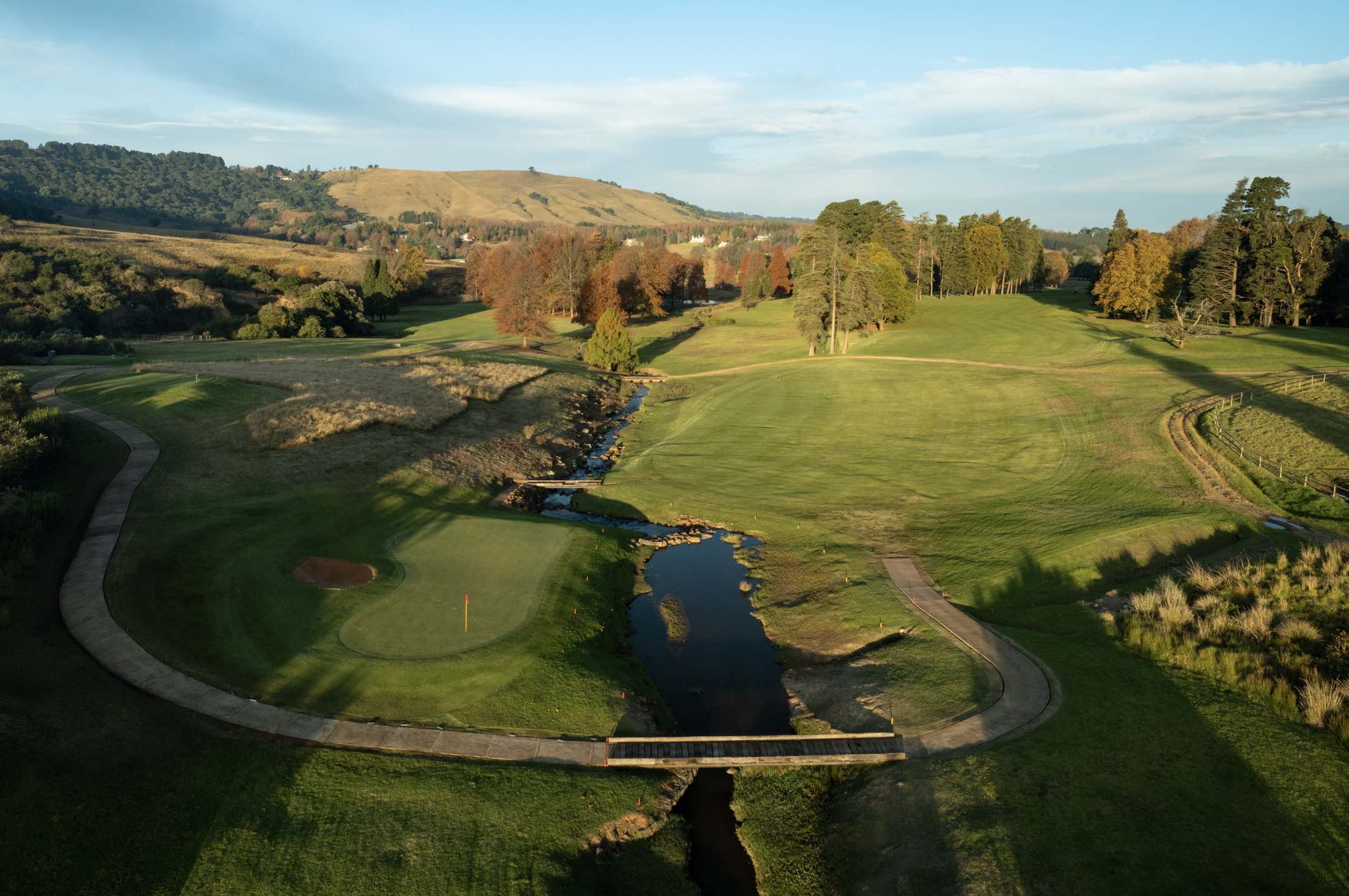
After a downhill par four of 360m, the short par-three 5th is up. Although this is the signature hole (see below), the course has numerous picturesque holes to choose from.
This short par three is then followed by the second par five of the nine, spanning 443m. It’s a par five which can give up birdies but can also end in the water left and surrounding the hole. The fairway slides from right to left with water down the entire left side. The fairway widens the closer you get to the green, allowing for a large landing area. A small green awaits with water left and around the back and a small bunker protecting the right side. A difficult target to find with a long-iron in hand.
After playing one of the shortest holes on the course, the par-three 7th/16th at 130m and 115m, you turn to play one of the longest at 380m. The fairway of the 8th/17th with its slight left-to-right shape requires a fade to avoid a water hazard up its left side. The fairway also has a strong left-to-right slope and any ball pushed right is closed off from the green by a clump of trees on the right of the fairway. A decent drive will leave you a mid-iron into the large green, which is well-protected by three bunkers. A par on this stroke 1/4 is as good as a birdie on any other hole.
The long 9th takes you downhill back to the clubhouse. At 398m it is a strong closing hole with water down the left side. The smallish green is well protected by three bunkers front and left, and par here makes halfway just that bit more enjoyable.
The charm and history of the course is noticeable when stepping into the country-style clubhouse. The walls are covered with trophies, paintings of the surrounding area and detailed architectural drawings from the original layout of the course. Recent upgrades have created an interior dining room for halfway and breakfast, allowing just that little extra space needed to what is one of the smaller clubhouses in the country. Although small, it covers all your needs from a well-stocked pro shop to bar and lounge area as well as dining areas inside and out on the patio. In winter, you can expect a roaring fire to be burning as the Midlands is known for particularly harsh winters.
Bosch Hoek also offers accommodation at its upmarket lodge which can host up to 24 guests in a variety of 12 rooms. Originally built for the polo club, the lodge has been skilfully transformed into accommodation on either side of what is a charming dining and bar area. Aside from the amazing location, the cuisine at the lodge must be one of the best-kept secrets in the area.
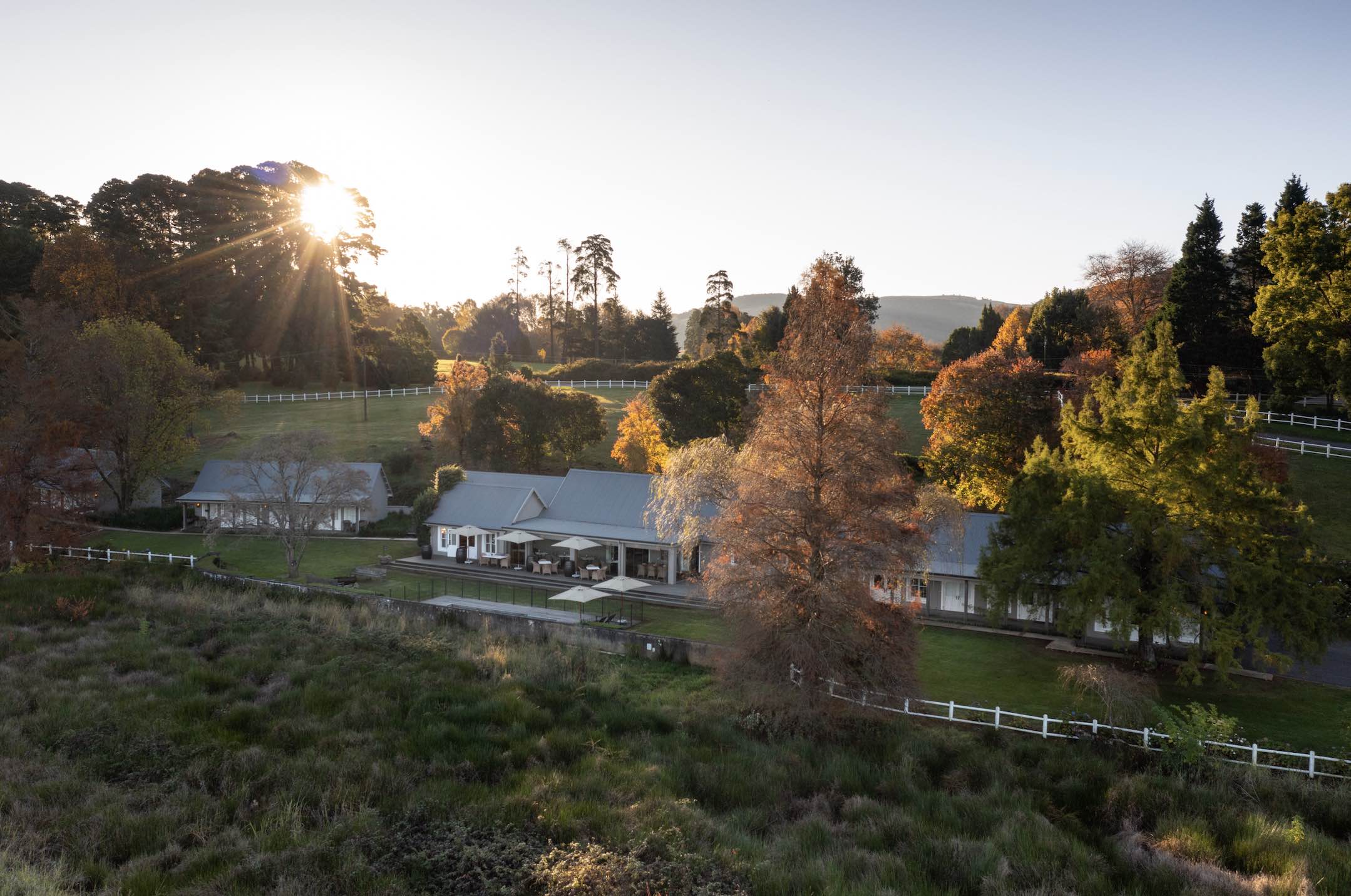
Offering a number of wholesome locally sourced dishes, the on-site chef is always happy to accommodate requests or offer you some of his speciality self-created dishes.
Conference facilities have also recently been added to their offering in a wing of one of the main farm homesteads on the land. Team building or brain-storming for the year ahead in a cosy conference facility with meals overlooking the course and farm will certainly get the creative juices flowing. An added bonus of the location is although you are on a secure estate in the Midlands, Nottingham Road is a mere 20-minute drive for any shopping requirements you have. Interestingly, only 35 stands were made available on the land to maintain its country charm.
Whether it is some downtime you are looking for or a few rounds of golf, a longer stay is always advocated. Other activities include mountain biking, trout fishing and hiking – for the more energetic, Bosch Hoek and the surrounding area has you covered. The appeal of the location and golf course cannot be overemphasised enough with the course being a shot-maker’s delight and playable year-round. The KZN Midlands needs no introduction and Bosch Hoek should be on your must-visit locations when next in the area.
SIGNATURE HOLE
5th hole, par three, 152m
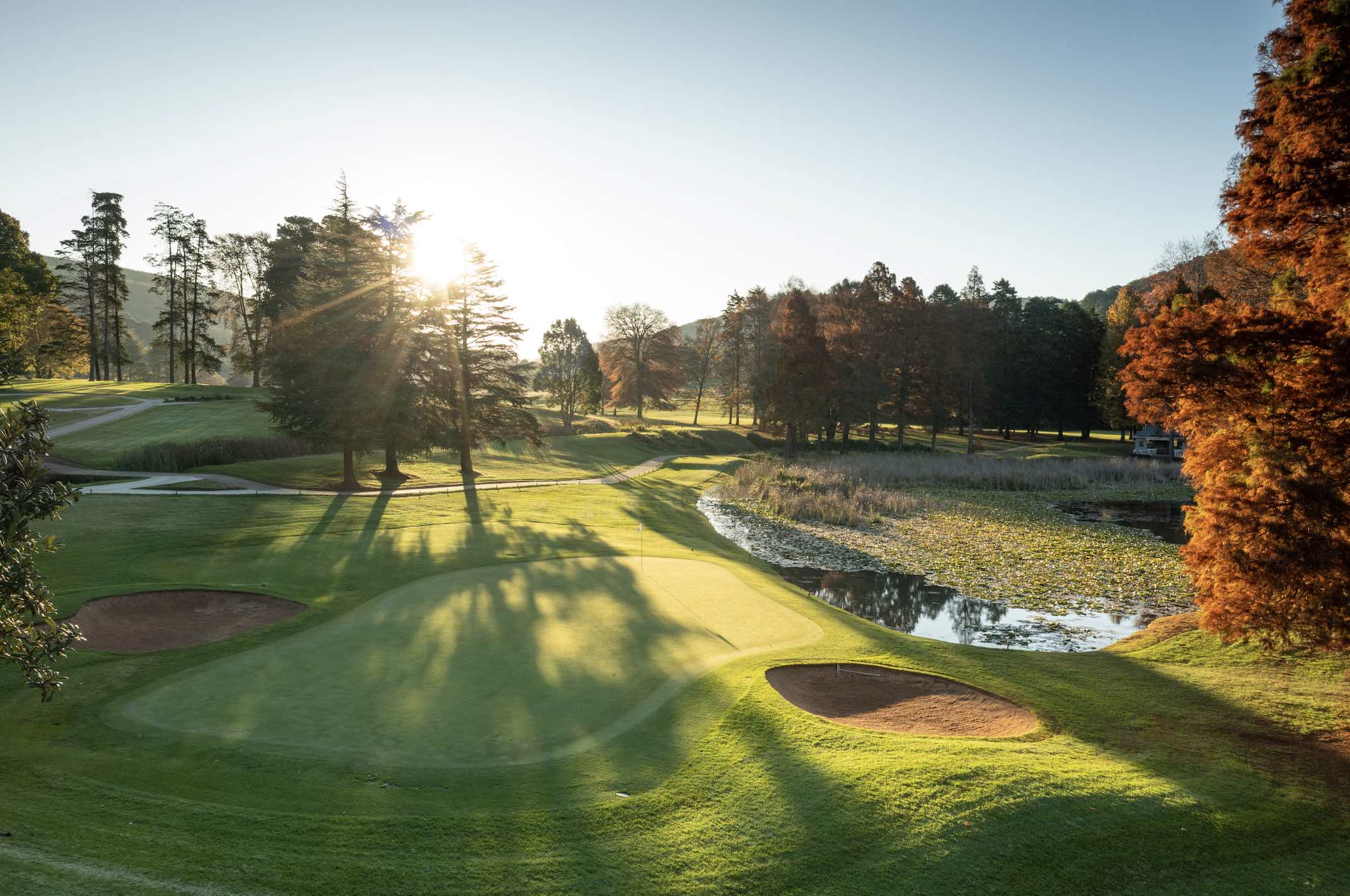
This is an elegant little hole. With the tee set back in the trees, any wind is difficult to read so be sure to gauge its strength and direction before getting to the tee. On the first time of playing, the route to the green requires a carry of 135m to avoid the water. On the second time of playing, the angle to the green changes completely although a similar club is required as the hole plays a mere 2m shorter.
This is a perfect example of the Grimsdell layout showcasing how a subtle change in tee box can create a very different hole layout and playing experience. As such it is easy to assume the nine holes are repeated on the second playing, which is not the case.
Greenside water on the left pinches the green to a very small landing area. Further into the green it widens and then once again, is pinched on either side by bunkers encroaching both left and right. At 150m, it should be a relatively short iron with the intention to avoid the water. Club selection is the biggest criteria to staying out of the water and on to the middle of the green. Taking the longer option is a good play to take the water out of the equation. With the size of the green, anywhere on its surface allows for a good two-putt chance.
The green is large enough to offer a genuine target with a little bit of leeway for a slight mis-hit. The surface slides downhill from back to front with the bunkers and either side also pushing the ball towards the middle of the green. At 150m it is all about hitting one solid shot to find the surface and par is very much in reach.
At the right time of the year (March-May) it is quite possibly the prettiest short hole in the country. Be sure to look back from green to tee to enjoy the layout of the land and surrounding mature trees.
GREENFEES
Scholar R230/9 holes R260/18 holes
Guests R370/9 R545/18
Golf cart R310/9 R420/18
GETTING THERE
The course is a 90-minute journey from Durban along the N3 towards Johannesburg. Take the Balgowan and Curry’s Post glide-off (Exit 125). At the top of the glide-off turn right over the N3 and travel 500m to the Bosch Hoek Golf and Lodge entrance.
ROAD DISTANCES
Durban 128km
Joburg 452km
Cape Town 1,520km
Gqeberha 916km
Bloemfontein 519km
CONTACT DETAILS
Phone: (033) 234 4232
Email: [email protected]
Web: www.boschhoek.co.za
– This article first appeared in the November 2023 issue of Compleat Golfer magazine.
Photos: Mark Sampson


